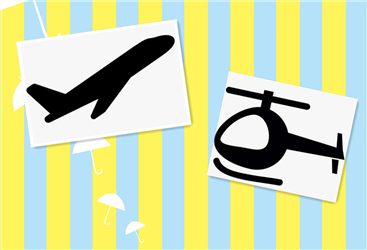
Are RC fixed-wing flight times longer than RC helicopters
Why is the flight times of RC heli relatively short?
- Energy density relationship. The battery capacity is small and light, but the battery life is also short. However, a large-capacity battery is used, and the battery is also heavy, so it is necessary to allocate some extra energy to bear the excess weight. The main reason why the current electric model aircraft can only last for 10-15 minutes.
- The motor system needs cooling and rest. Because the helicopter motor has been working on medium and high loads, the motor system generates a lot of heat, so you need to stop working and rest for 10-15 minutes of flight. If you continue to work, the permanent magnet will demagnetize and the power will drop, even burn the motor when it is serious.

It can be said that the battery life of 10-15 minutes is not only affected by the battery, but also has a motor factor that requires a temporary rest.
If you want to fly for a long time, only the fuel engine is currently competent. However, novices should not be involved. The fuel engine has strong power and is extremely dangerous. A slight accident will cause personal injury or death to yourself or others.
The fixed wing has two characteristics:
- As long as there is airspeed, it can maintain the flight status, and no extra energy is needed to provide lift. The most extreme example is the unpowered glider, which can fly all the time as long as there is a suitable air flow, and almost no electricity is needed.
- Many aircraft model fixed wings are self-stabilizing systems, and tend to fly evenly without external forces. Especially for gliders and sports. Some fixed wings do not meet the above two points and will consume more power. For example, like a EDF, F22 and the like. Due to its own weight and small wingspan, it needs a higher speed to maintain level flight, and the duct itself consumes more power. The actual flight will be shorter than the straight battery using the same battery.
The helicopter obviously does not meet these two characteristics. It must have enough power to drive the main propeller all the time to maintain the lift (and the energy required for hovering is quite high); it is an unstable system that requires continuous adjustment of attitude.

In addition
- The component that consumes energy when the aircraft is flying is the engine. The fixed-wing aircraft engine provides forward flight pull force through the propeller to overcome the resistance. The helicopter engine generates vertical thrust through the large-diameter rotor to overcome gravity.
- When the fixed wing performs horizontal straight flight at the designed cruising speed, under normal circumstances, gravity will be an order of magnitude greater than drag, about 10 times, and some aircraft with a large aspect ratio can achieve more than 20 times.
- The same engine and the same power, under their respective flight conditions, due to the smaller fixed-wing propeller area and faster flight speed, the fixed wing produces less pulling force; the helicopter rotor area is large and the incoming flow speed is low, the helicopter rotor The pulling force generated on the is large. However, the gap between the tensions does not exceed an order of magnitude.

In conclusions:
The engine with the same power has a low pulling force on the fixed wing, but the shape of the fixed-wing aircraft can drive the high-speed flight with 10 to 20 times the weight of the pulling force; the pulling force generated by the engine on the helicopter is slightly larger, but all the pulling force is used to Overcome gravity. So usually, when the same power engine is installed, the flight weight of the fixed wing is much heavier than that of a helicopter. Naturally, more cargo can be installed, and more oil or larger batteries can be installed, so the flight time and distance are very far.


Leave a comment